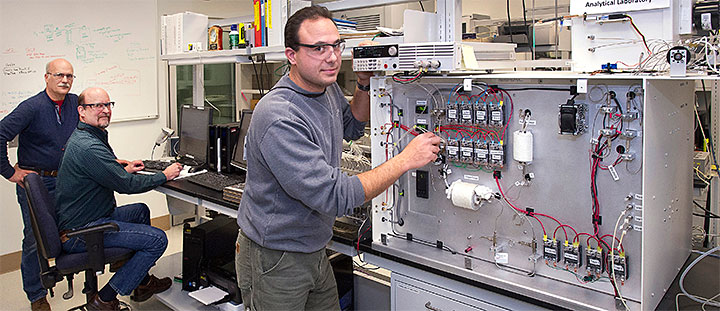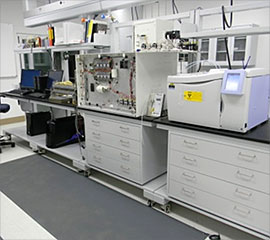
Tracer Technology Group

The Tracer Technology Group (TTG) developed the use of perfluorocarbon tracers (PFTs) as tools for studying long range atmospheric transport and dispersion in the early 1980s.We are world leaders in the use of PFTs for solving diverse research and engineering problems in the atmospheric sciences, the energy production and utility industries, and building characterization.
The unique capabilities of the TTG are derived from our analytical expertise, infrastructure, and experience. We have developed PFT analytical methods that have detection limits at the femtogram level. We can measure global background levels of PFTS at the parts per quadrillion levels. Our scientists and technical staff have extensive experience in designing and executing tracer-based field programs. We have four highly modified, dedicated gas chromatographic analytical systems and over 100 automated, programmable field samplers giving us the ability to make measurements with exceptional temporal and spatial resolution.
The perfluorocarbon tracer compounds are totally fluorinated cycloalkane compounds consisting of 4, 5, and six atom carbon rings. Because the fluorine-carbon bond is strong, these molecules are very stable. They are not susceptible to oxidation in the atmosphere. The only important sink for perfluorocarbons is photolysis in the mesosphere. They are biologically benign and have been considered as blood substitutes and are used in eye surgery.
PFTs make good tracers because of their physical characteristics and because they are present in the atmosphere at low levels. Background concentrations are several parts in 1015 (parts per quadrillion by volume, ppqv) so the release of small amounts of PFT results in unambiguous signals. The large numbers of fluorine atoms and the structure of these molecules cause them to have high electron affinities.
Programs
Atmospheric Transport and Dispersion
The TTG has participated in atmospheric transport and dispersion experiments on long range, regional, and local scales over distances from 1.5 to 2000 km. We have developed tracer methods to measure air infiltration in buildings from single family residences to multi-story urban office buildings. These data have been used in studies of energy efficiency and indoor air quality including a major indoor air quality health study sponsored by the Canadian national health department, Health Canada, and building energy efficiency studies conducted by the Canadian National Research Council.
Air Filtration Systems
We have measured the effectiveness of air filtration systems designed for hazard mitigation in nuclear power plant control rooms and conducted indoor measurement programs testing hazard mitigation systems at the Pentagon.
Underground System Integrity
We developed PFT methods for testing the integrity of underground systems including hazardous waste containment structures, and developed a PFT based leak detection systems for the Electric Power Research Institute and the Northeast Natural Gas Utilities trade association. These systems are now in use internationally. We have a global network of private contractors that use these techniques to find dielectric fluid leaks in underground transmission cables.
Other Applications
Other applications we have developed include the validation of tower footprint models for the Ameriflux program, characterization of the fractured heat exchange volumes created in engineered geothermal systems, and development and application of methods for monitoring, verification, and accounting of sequestered CO2 in support of DOE carbon sequestration research.





